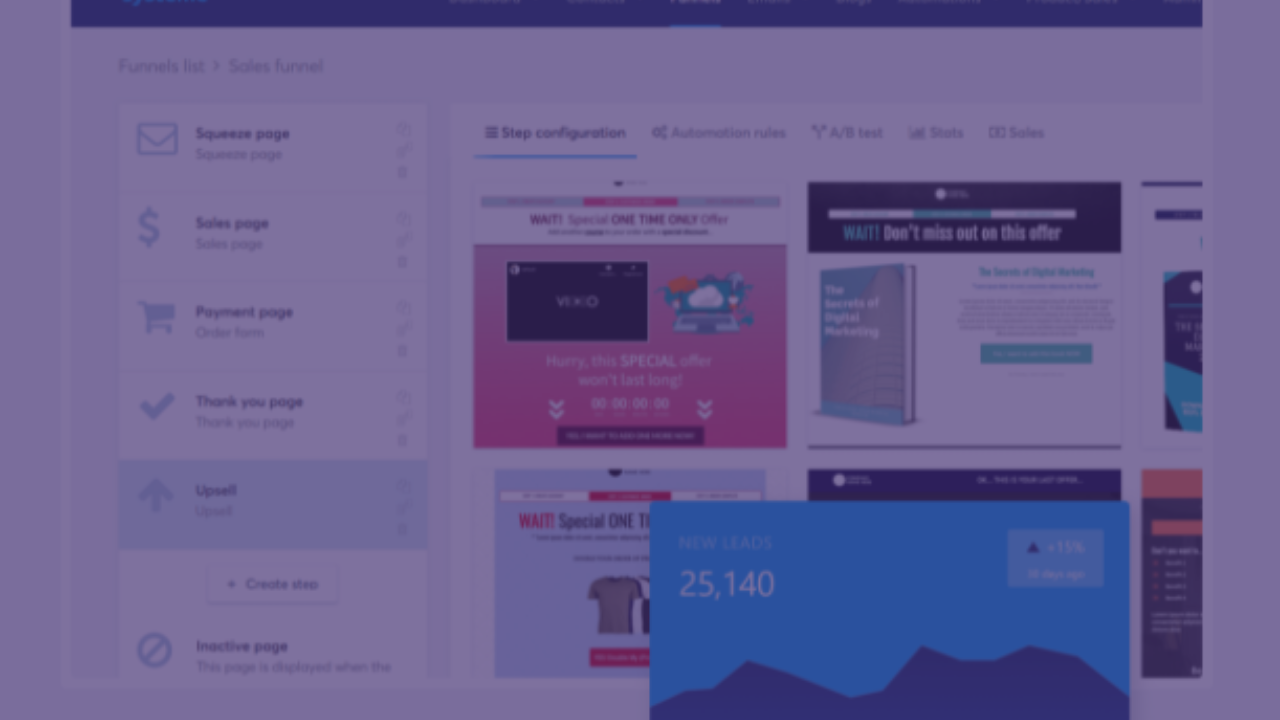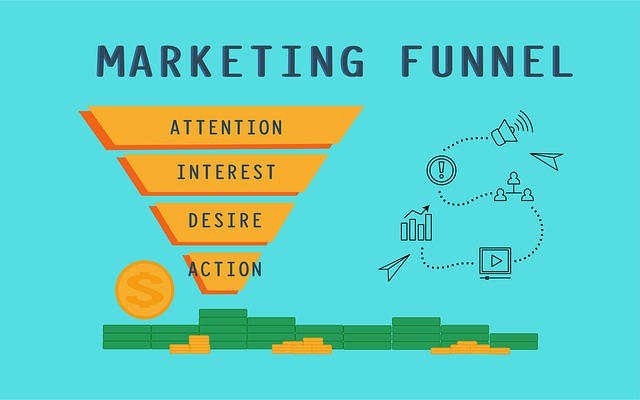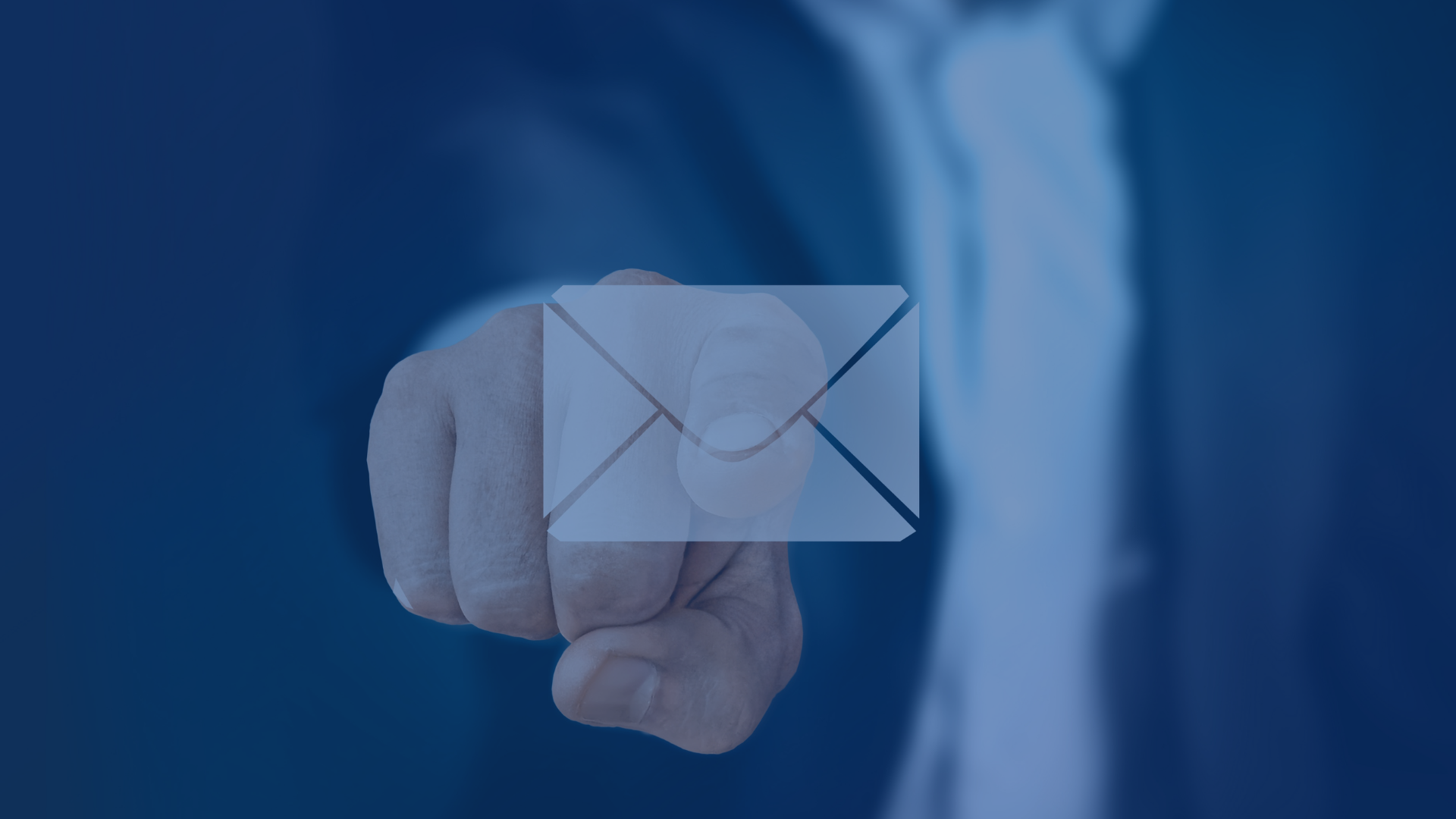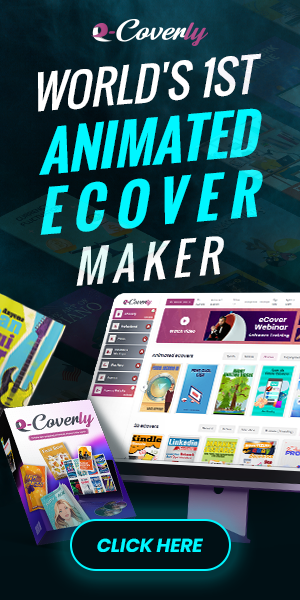How To Create A Sales Funnel - Systeme.io
How To Create A Sales Funnel - Systeme.io
Every consumer embarks on a quest to locate you. And as an entrepreneur and a business owner, your aim is to make their journey as quick and profitable as possible.
This trip is known as the sales funnel in sales and business, and it happens even if you don't participate.
However, just because a sales funnel emerges organically doesn't mean you shouldn't try to improve it.
We'll teach you how to create a sales funnel in this post.
What is the definition of a sales funnel?
A sales funnel is a sales model that depicts all of your prospects' actions as they progress toward becoming your customers.
Consider the following scenario:
You're strolling down the street when you see a store display. You go in and instantly see the sweater you require. When the store assistant informs you it's on sale, you instantly reach for your credit card.
Congratulations for making it all the way through the sales funnel!
The sales funnel includes everything you did and everything the business owner did to encourage you to buy.
In actuality, the phrase "sales funnel" refers to all of the stages your potential consumers take to become paying clients or not.
You probably don't think about it in such abstract terms; all you know is that when you run an advertisement, you get clients.
The key now is to figure out how to attract a large number of clients and increase your revenue.
We envision the buyer experience as a funnel to better understand it.
A large number of individuals enter at the top of the funnel. They're all the folks who come across your offer at one time or another.
However, as time goes on and people get closer to completing a purchase, some of them will naturally fade away. Maybe they're not interested, maybe they stumbled into your offer, or maybe they don't like your stuff.
Those that remain will eventually become paying consumers.
The ultimate distinction between folks who may become your customers (but don't) and people who complete a transaction is buyer psychology.
Why You Need an Optimized Sales Funnel
You already have a sales funnel in place. So, why do you need to organize it and make changes?
You won't know what works and what doesn't until you have an organized funnel.
The most important purpose is to increase conversions. You'd want to boost your sales and attract more clients. A random sales funnel, on the other hand, is not the way to go.
You're going to leave everything up to chance.
You can count on an optimized sales funnel to produce more and more money as time goes on.
Second, you must "stop the leaks." Leakage occurs in every sales funnel; prospects slip out at various times.
This is quite normal. You may, however, limit the number of drop-offs, enhancing your conversion chances.
You won't be able to achieve this without an optimized funnel since the exact drop-off locations will be impossible to detect.
Finally, a good sales funnel will assist you in standardizing and automating your selling process.
Instead of wondering if your activities and advertising would pique your consumers' interest, you'll know exactly how to convert leads into prospects.
It's well-organized, tidy, and dependable, allowing you to devote more time to operating your firm.
Finally, you want to extract the most money out of your current consumers.
Your consumers' purchase of a single product does not terminate the sales funnel.
Instead, by up-selling and cross-selling to your consumers, an efficient sales funnel may help you keep them and maximize their worth. Isn't it fantastic?
It's time to look at how sales funnels function in the real world.
How does a sales funnel work?
A sales funnel is divided into four stages:
1. Awareness
2. Interest
3. Desire
4. Action
Your potential consumers are referred to as visitors during the awareness phase. Leads are generated during the interest phase (as they have shown interest). They're prospects during the desire phase.
Finally, prospects take steps to become customers during the action phase.
The term "conversion" is frequently used when discussing sales funnels.
Conversion can refer to a transition between phases, such as when a lead becomes a prospect.
However, conversion may also refer to the last stage of the process: when a prospect becomes a client.
You and your potential clients must first journey through the funnel phases in order to earn that ultimate conversion. And each step is distinct.
1. The awareness stage
Your clients are only dimly aware of your offer at this time.
They may have seen an advertisement or Googled a certain search term for which you score well. Consider this to be their first encounter with you and your company.
If you have an eCommerce site, for example, the purpose of the awareness phase in this eCommerce sales funnel is to attract customers who are seeking the things you offer to your website.
You must make a solid first impression once they arrive on your website.
This phase's purpose is to find a suitable audience and hold their interest. You're looking for folks who have issues that your solution can solve.
You should collect the information of qualifying visitors at the end of this step so that you may move them through the rest of your funnel.
Lead magnets (e.g., eBook downloads, discount vouchers) and landing pages where you collect their email addresses are common ways to achieve this.
2. The interest stage
You supply material to your leads throughout the interest stage that makes the product even more relevant to their requirements and lives.
This is where you will develop leads into prospects.
Email campaigns are commonly used to do this.
Through a combination of personal anecdotes about your company, testimonials, and even blog material, you'll demonstrate the worth of your product.
The greatest solution is to offer them testimonials from people who are similar to them.
The purpose of this step is to pique your leads' attention. You want them to feel confident that your product is a good match for their requirements.
3. The decision stage
It's time to pitch and close the deal if your leads are convinced that your solution meets their demands.
With sponsored advertising, you may retarget leads and visitors. You can utilize consumer testimonials that are quite detailed. You might also give them a discount or a limited-time deal.
It will be much simpler to convert your consumers at this level if you have offered enough value in the previous stages and they have made several micro-commitments.
4. The action stage
Finally, we arrive at the action stage.
This is the point at which your prospects make a purchase.
Entrepreneurs are sometimes hesitant to invest in their funnels. You will, however, see a significant return on investment once you've tuned and improved them.
So, if you discover that retargeting is more effective than email sequences, weigh the costs and benefits before moving further.
It's also a good idea to continuously contact your clients in order to keep them and maybe gain referral traffic.
One of the most effective marketing strategies is word of mouth. It should be incorporated into your sales funnel.
Now that you've learned everything about the fundamentals of sales funnels, it's time to build your own.
How to create a sales funnel
Depending on your needs and the tactics you use, there are a few ways to design your sales funnel:
- Draw it out on a sheet of paper, come up with a strategy, and then act accordingly.
- Create an automated sales funnel with a solution like Systeme.io.
Regardless of the method you employ, be sure you have a watertight funnel by following these steps:
Start with research
If you want to build a sales funnel that doesn't lose leads, you'll need to perform some research.
And, because it's all about your consumers, you'll want to start there:
- What kind of people do you get as customers? What is their demeanor?
- What are their issues and aspirations?
- What are their favorite places to hang out online and in the real world?
- What kind of stuff do they enjoy?
- How do they converse with one another?
In short, you must create a consumer persona.
Your customer persona should reveal what matters to your potential consumers and how they prefer to receive information.
If they use Facebook, for example, you may utilize Facebook advertisements to draw their attention (you'll know if they do after investigating their habits in this stage).
SEO and search engine marketing, on the other hand, perform well for the vast majority of firms.
If you've been in the company for a while, poll your current consumers to learn more about their buying process.
Finally, use heat mapping tools to see how your visitors and customers engage with your website.
You can be doing everything properly, yet your website still needs work.
After you've finished this phase's study, you should have a firm grasp on the following:
- How do you communicate with your customers? (channels and topics)
- What are the issues that your consumers are having?
- What do the journeys of your consumers look like
Create your sales funnel structure
It's time to build your sales funnel structure when you've gathered all of the information you'll need to understand your customers' journeys.
Choose the major channels you'll use for each step first.
Some businesses, for example, use social media advertisements to reach out to potential clients during the awareness phase.
These adverts then direct them to a landing page where they can fill out lead magnets and lead generation forms to get their contact information.
Then, during the decision stage, they employ email marketing to make an irresistible offer to prospects.
The next stage is to draw a diagram of the expected development and interaction:
- How do you anticipate your prospects interacting with your material as they progress through the stages?
- When are your prospects most likely to convert?
- What would you provide them in exchange for their conversion?
At each point, you should have a tempting offer.
For example, between the awareness and interest stages, you might give a lead magnet in the form of an eBook to grab your potential clients' information.
Then, using email marketing, you might offer them helpful blog articles.
You may offer your leads a limited-time discount to turn them into customers during the decision phase.
Finally, choose the measurements you'll employ.
How will you know whether each step achieves the objectives you set?
Some organizations, for example, measure the success of the awareness stage by the number of new email addresses they collect.
If they don't capture enough, the stage might probably benefit from a better lead magnet.
To measure the success of your decision stage offerings, you may track email openings and/or clickthroughs.
Constructing your sales funnel
It's preferable to do as much as possible on a limited number of platforms.
So, if you have a blog for SEO (which is crucial throughout the awareness and interest phases), you'll want to set up your email marketing in the same way.
Systeme.io makes it simple to integrate multiple applications into your sales funnel.
In only a few clicks, you'll be able to create powerful sales funnels using Systeme.io:
- Any product can be sold.
- Create landing pages that are optimized.
- Create automation workflows and rules.
- Upsells and order spikes can help you increase your sales.
- Set up email marketing campaigns that are automated.
- Promote your business by running affiliate programs.
- Using a simple blog builder, you may create useful blogs.
Let's pretend you want to build a high-performing sales funnel:
1. Awareness stage – Blog content and SEO
2. Interest – Landing pages with lead magnets
3. Decision – Email marketing
4. Action - Offers, promotions, up-selling
To build a sales funnel like this, you'll typically require at least five to six services (and they all come with hefty price tags).
Systeme.io, on the other hand, allows you to set up everything in one app!
You also don't require any technical knowledge. Before you can say, "Let's sell this thing!" you'll be moving clients through your sales funnel.
Drive traffic to your sales funnel
Awareness and interest will be the two stages of your sales funnel that you will advertise the most.
The following strategies have shown to be the most effective in getting your business up and operating as quickly as possible:
- Social media: Use both organic and sponsored social media postings to promote your content. You may also use social media advertisements to retarget prospects who have visited your blog but have not provided their contact information.
By participating in Facebook groups, Twitter and LinkedIn chat, and even message boards like Reddit, you may learn a lot about the material that your future clients want to hear.
- SEO: Search engine optimization is one of the most effective strategies to reach out to potential clients who are ready to make a purchase. You'll be one step closer to assisting them in making a purchasing choice because they'll all do research based on the issues they've discovered.
- Paid advertising: If you need results quickly, Google Ads is the way to go. You'll uncover prospects that are ready to convert if you use long-tail keywords with buy intent.
Focus on actionable purpose keywords that your product reacts to instead of informative and generic keywords (e.g. What is marketing) (e.g. Best marketing courses if you offer marketing courses).
- Make use of lead magnets: Lead magnets are one of today's most effective marketing tools. Make a fantastic magnet, and then advertise it widely.
- Establish specialized landing pages: If you want to attract multiple categories of clients (for example, stay-at-home moms and middle-aged entrepreneurs), create separate types of landing pages for each customer to better respond to their purpose.
Inquire about referrals from your current customers - Customers that adore your stuff are likely to exist if you've been operating for a while.
It's time to put them to work for you. You may write them an email urging them to tell their friends about you. Of course, provide an incentive for them to do it, such as a discount (if possible).
Consider affiliate marketing - it's just another sort of referral marketing, and it's really effective!
With just a few clicks, you can set up your affiliate program on Systeme.io and have it instantly included in your sales funnel.
Increase your consumer base by using email marketing to:
- Creating a mailing list
- Creating email sequences that are automatically sent
- Writing excellent emails
With Systeme.io's elegant forms, you can create an email list and categorize your contacts. This is especially useful if you want to appeal to a variety of clientele.
Then it's only a question of putting together the proper drip programs.
Perhaps you'd like to follow up with a prospect a day after they've received your lead magnet. Then, two weeks later, you may send them a follow-up email.
You'll eventually make them an offer they can't reject.
You could compose all those emails yourself, but you'd waste a lot of time doing so (and money). It's far preferable to use Systeme.io to create targeted and automated email campaigns.
The following should be included in your email:
- Relevant
- Timely
- Useful
This implies you should deliver the content your clients want when they want it.
You could, for example, sell computers and cellphones.
Create two email lists: one for those interested in laptops and another for people interested in phones to optimize your conversions.
It's something Amazon does on a regular basis (and their sales funnel is pretty successful).
Then, send separate email campaigns to different groups of your mailing list to make sure they're getting the material they want, rather than all you have to offer.
Best practices for sales funnels
Finally, one of Systeme.io's advantages is that you may create a sales funnel and forget about it.
However, there are a few strategies you may take to increase the number of conversions you get:
A/B Testing is a method of comparing two options.
Test your landing pages, content, and lead magnets on a regular basis. You may even put your email sequences to the test.
Just make sure you only test one thing at a time so you can link growth to particular changes.
For example, one month test your landing page copy, and the following month test your email sequences.
Everything should be automated
You want your business to function on autopilot for 80% of the time so you can focus on the 20% that requires your strategic input.
Systeme.io allows you to automate a variety of tasks, including:
- Sales
- Workflows
- Sales funnels
- Email marketing
- Affiliate marketing
- Upselling and cross-selling
Follow-up and reengage
Follow-up is the key to unlocking your entire sales potential. Approximately 80% of purchases require at least 5 follow-ups.
Having a good email sequence is quite beneficial. You won't have to do anything manually, and you'll obtain all the information you need.
If you have dormant email subscribers (or leads who haven't converted in a long time), use a unique offer to reengage them.
Measure the success of your sales funnel
Finally, some of the most basic sales funnel measurements are:
- Total conversions (The total amount of people who have turned from leads to customers across the funnel)
- Conversions per step of the sales funnel (How many people went from visitors to leads, from leads to prospects, prospects to customers, etc.)
- The quantity of sales/leads/conversions received.
- You can, however, employ sophisticated measures such as:
- LTV (Lifetime Value of a client; how much money have you made from them since they first became a customer?)
- (How long does it take for a lead to convert into a customer?)
That's all there is to it!















